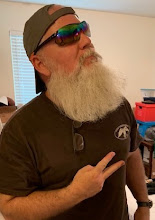
in 1903, one of my favorite writers, w. e. b. dubois wrote of america, “The problem of the twentieth century is the problem with the color line.” And yet, during the twentieth century our country saw incredible strides in race relations in all facets of life. to name just a few: the end of jim crow, 1954's brown vs board of education decision (made segregation in public schools illegal), 1964's civil rights act (made discrimination in employment illegal), 1965's voting rights act (insured voting rights to minority citizens), immigration and national services act of 1965 (drastically altered immigration policy), 1968's civil rights act (made illegal discrimination in sale and rental of housing), and 1972's gale vs collier (ended racial segregation in mississippi’s state prison, parchman). all of these historical strides in race relations, and more, happened in the twentieth century. some even before dubois’ death in 1962. history records the success stories of minorities throughout the american landscape during the twentieth century. twenty four black women, seven hispanic women, and three asian women have served in the united states congress. it is not difficult to create a list of the colin powell’s, the walter williams’, the oprah winfrey’s, the tiger woods’, the spike lee’s, the denzel washington’s, the bioncye’s, the jackie robinsons, the shelby steele’s, the osceola mccarty’s. it IS difficult to exhaust the list. and yet, six years into the twenty-first century, concerted efforts to make the color line an issue in the new millennium persist. the latest attempt is via cbs’ survivor:cook island reality television series which pits asians, blacks, hispanics, and whites against each other. even as a metaphor, this portrayal of “reality” reflects neil postman’s claim that we truly are trying to “amus(e) ourselves to death.” be that as it may, i would like to recount an experience i had this summer that runs counter to the notion that america can not break free from the history of racism. as i was driving on I59 in alabama between the rural communities of hixon and epes, i saw two cars jockeying for position. one vehicle was a moderately priced, newer suv; the other a twenty year old beater. both vehicles were being driven by white drivers - one in their late twenties, the other in their mid thirties; one a man; one a woman; one license plate was from alabama, one plate was from mississippi. who was how old and driving what i’ll leave for you to decide. on one vehicle the bumper sticker read, “Al Sharpton - 2008.” on the other vehicle the bumper sticker read, “Condi Rice - 2008.” now i’m not sure what dubois’ ultimate take on the state of race relations in 2006 america would be, but i’d have to think he would get a charge out of that vision i witnessed on what too many folks see as the road to perdition.

2 comments:
E.L.,
I often wonder what it would look like for us to move beyond race as a defining factor in our world. In the community I live in, there are definite "neighborhoods" belonging to the different races. It's really sort of interesting because, best I can tell, there isn't any sort of racial hostility, but, at the same time, everyone goes back to their own "ghetto" each evening to be surrounded by people that look and talk like they do.
Wendell Berry wrote a book called "The Hidden Wound" that talks about race relations, particularly race relations in the South. It would definitely be worth your while to read it.
That "Survivor" thing? I don't know what to make of that...
what a scene... good, thoughtful post.
Post a Comment